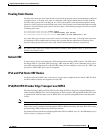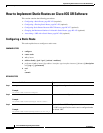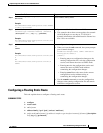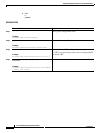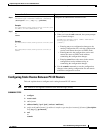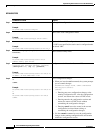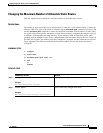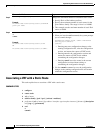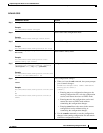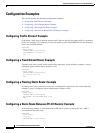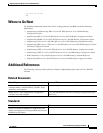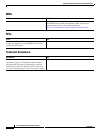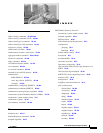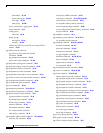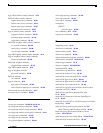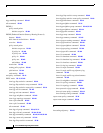
Implementing Static Routes on Cisco IOS XR Software
How to Implement Static Routes on Cisco IOS XR Software
RC-431
Cisco IOS XR Routing Configuration Guide
OL-14356-01
DETAILED STEPS
Command or Action Purpose
Step 1
configure
Example:
RP/0/RP0/CPU0:router# configure
Enters global configuration mode.
Step 2
router static
Example:
RP/0/RP0/CPU0:router(config)# router static
Enters static route configuration mode.
Step 3
vrf vrf-name
Example:
RP/0/RP0/CPU0:router(config-static)# vrf vrf_A
Enters VRF configuration mode.
Step 4
address-family {ipv4 | ipv6} {unicast |
multicast}
Example:
RP/0/RP0/CPU0:router(config-static-vrf)#
address family ipv6 unicast
Enters address family mode.
Step 5
prefix mask [vrf vrf-name] {ip-address |
interface-type interface-instance} [distance]
[description text] [tag tag] [permanent]
Example:
RP/0/RP0/CPU0:router(config-static-vrf-afi)# 20
01:0DB8::/32 2001:0DB8:3000::1 201
Configures an administrative distance of 201.
Step 6
end
or
commit
Example:
RP/0/RP0/CPU0:router(config-static-vrf-afi)# en
d
or
RP/0/RP0/CPU0:router(config-static-vrf-afi)#
commit
Saves configuration changes.
• When you issue the end command, the system prompts
you to commit changes:
Uncommitted changes found, commit them before
exiting(yes/no/cancel)?
[cancel]:
–
Entering yes saves configuration changes to the
running configuration file, exits the configuration
session, and returns the router to EXEC mode.
–
Entering no exits the configuration session and
returns the router to EXEC mode without
committing the configuration changes.
–
Entering cancel leaves the router in the current
configuration session without exiting or
committing the configuration changes.
• Use the commit command to save the configuration
changes to the running configuration file and remain
within the configuration session.



